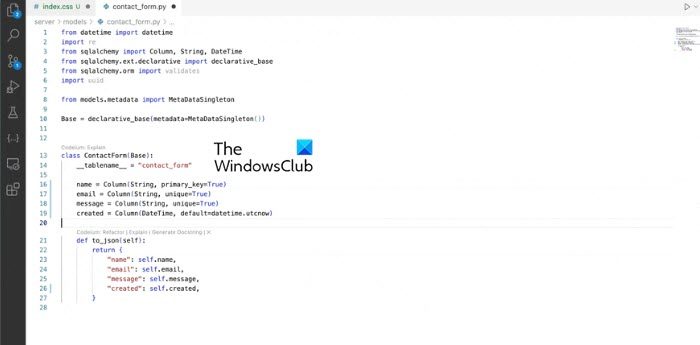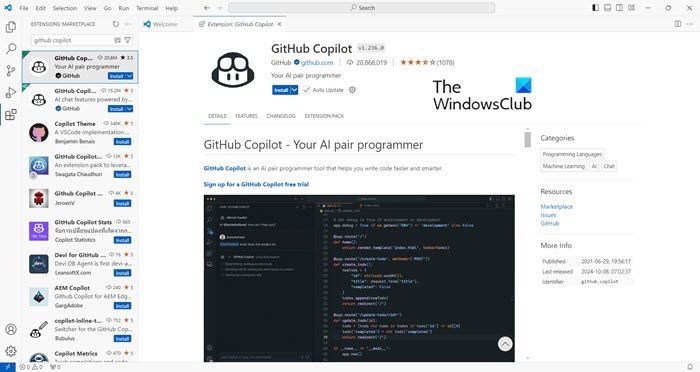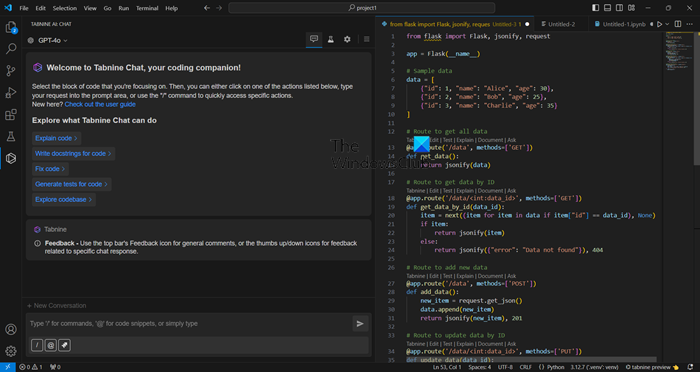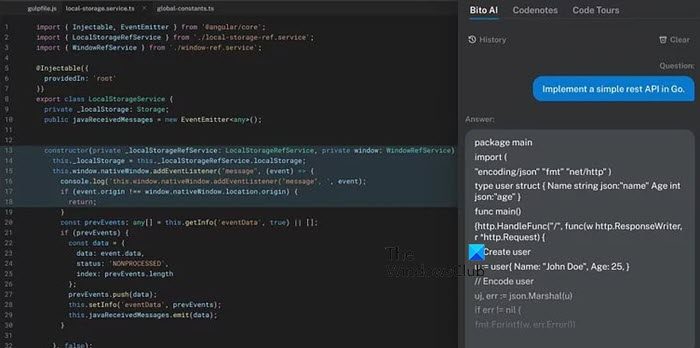Unleashing Creativity Through Coding: The Power of AI Tools and Community Programs
As technology continues to transform our world, the importance of coding skills has become increasingly clear. Fortunately, learners of all ages can now find support through AI-powered tools and innovative community programs. Let’s delve into two inspiring approaches that are shaping how we teach and learn coding.
The Rise of AI Code Generators
In recent years, AI code generators have become indispensable for developers looking to streamline their workflow. These tools act as extensions for Integrated Development Environments (IDEs) like Visual Studio Code (VS Code), providing real-time support and suggestions that enhance coding productivity.
1. Codeium

One standout AI-powered coding assistant is Codeium. Designed to facilitate coding across 70+ programming languages including Java, Python, and C++, Codeium offers features such as autocompletion and an AI chat assistant to help developers query their codebase. With its intuitive user interface, developers can ask questions in natural language, making it easier than ever to find the information they need. To get started with Codeium, simply visit codeium.com.
2. GitHub Copilot

Another formidable tool is GitHub Copilot, which leverages the power of OpenAI’s model to generate entire lines or blocks of code based on the developer’s context. This can be particularly useful for beginners looking to grasp new languages or frameworks. Installing GitHub Copilot is straightforward—just search for it in the VS Code Extensions marketplace. By integrating with other tools, GitHub Copilot further enhances its capabilities.
3. Tabnine

Tabnine is known for its intelligent code completion, adapting to user coding styles while safeguarding their privacy. This tool not only predicts what you may type next but also automates mundane tasks, allowing developers to allocate their time and creativity to more complex problems. Learn more at tabnine.com.
4. Cody
Cody is an interactive coding assistant that significantly enhances user experience with its machine learning algorithms. It supports multiple languages and assists users by fetching relevant context from their codebases, making it particularly valuable for full-stack developers. Discover more about Cody at meetcody.ai.
5. Bito AI

Bito AI stands out for its context-aware suggestions and automated code reviews. Utilizing advanced language models, Bito allows developers to maximize their productivity while maintaining a focus on coding principles. For further details, visit bito.ai.
In addition to these tools, there are numerous other AI coding assistants available for VS Code, including Continue AI, AI Doc Writer, and Readable. Each brings unique functionalities and benefits, demonstrating how AI can assist in coding across different experience levels.
Community Programs: Learning Through Creativity
Innovative tools are not the only way to enhance coding skills; community initiatives play a substantial role. One such initiative is led by Dr. Joel Graff from Montana Technological University. Despite his background in biological sciences, Graff has successfully implemented an affordable “Learn to Code” program in Butte’s elementary and middle schools.
The program began during the pandemic, capitalizing on open-source, drag-and-drop teaching methods that empower students to create their own video games. As Graff himself noted, “The most fun way that I learned to code was following tutorials that made video games.”
Expanding Horizons Through Game Development
Graff’s approach has been implemented at Margaret Leary Elementary and, most recently, expanded to East Middle School. The after-school coding club focuses heavily on critical thinking, employing block coding via Software like Scratch to teach fundamental programming principles. Importantly, the program has been designed to be entirely free, relying primarily on USB sticks—with no installations required on school computers.
In his efforts to further expand the program’s reach, Graff has partnered with educators from the Philippines. Such collaboration underscores the replicable nature of his low-cost initiative, making coding accessible to students everywhere.
Bridging STEM and Critical Thinking
Students engaged in Graff’s program are not only learning coding—they are also applying physical principles such as geometry and physics in their game designs. As they develop 2D and 3D digital art, learn audio editing with tools like Audacity, and utilize game engines such as Godot, they gain exposure to a wide array of STEM concepts.
“It’s really an unbelievable way, that’s 100% free to teach kids all sorts of different concepts that connect back to STEM,” Graff emphasized.
This innovative pedagogical method proves that coding education can be both engaging and educational, nurturing future generations of problem solvers.
Conclusion: A Bright Future for Coding Education
Whether through state-of-the-art AI tools or community-driven programs, the future of coding education is vibrant and full of potential. As the demand for technology-savvy professionals continues to grow, exchanges like Graff’s initiative and AI-assisted coding tools will help ensure that learners of all ages are well-equipped for the challenges ahead. The integration of creativity within science and technology education ultimately fosters a more comprehensive understanding of the world, preparing today’s students for tomorrow’s innovations.


 Photo by
Photo by 












